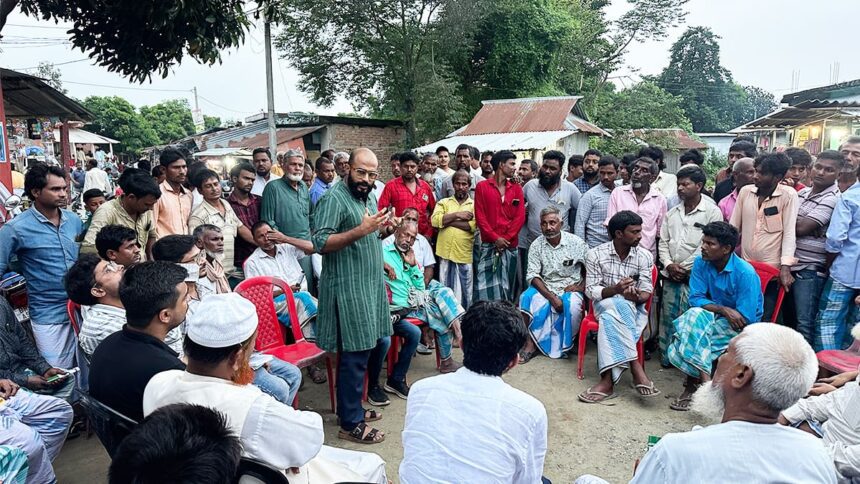As Bihar prepares for its assembly elections, the northeastern region of Seemanchal, characterized by a significant Muslim population, is drawing increased attention. Seemanchal comprises 24 assembly constituencies and has a 47% Muslim demographic, compared to the 17.7% Muslim population across Bihar as per the 2011 census. Historically viewed as a consolidated vote bank mobilized through religious identity, the political landscape of this region is rapidly evolving as migration, caste awareness, and the emergence of new political figures reshape the engagement of Muslims in the electoral process. This transition indicates a shift from identity-driven voting towards aspiration-based politics, focusing on development and representation.
Seemanchal includes the districts of Katihar, Kishanganj, Araria, and Purnia, with over 90% of its population living in rural areas and primarily involved in agriculture and labor. For decades, the region was dominated by a semi-feudal system where land ownership and political power rested with a select few, relegating the broader rural populace to cycles of dependency and poverty. During this period, elections resembled less of a genuine democratic choice and more of a collective ritual, often endorsed by religious leaders who urged adherence to ‘secular forces’ to counter the BJP. However, as large-scale labor migration has reshaped the socio-economic context over the past three decades, the politics of the region are undergoing significant changes.
The migration has led to economic stability, diminished feudal control, and fostered a new political awareness, allowing communities to envision a role as proactive citizens seeking accountability and new representation. Voters, rather than adhering to inherited political loyalties, are now assessing candidates based on their performance and responsiveness to local needs, marking a noteworthy transition to aspirations-driven confrontations in politics.
Nearly 28% of Bihar’s Muslim population resides in Seemanchal, and the 2023 Bihar Caste Census indicates that the Surjapuris comprise the third-largest Muslim caste group in the state, with about 2.45 million individuals. The Shershabadis follow with around 1.3 million, while the Kulhaiyas account for approximately 1.25 million. Each group inhabits distinct locales: Surjapuris in Kishanganj and Purnia, Kulhaiyas primarily in Araria and Purnia, and Shershabadis predominantly in Katihar. While caste consciousness among these groups is longstanding, political mobilization based on caste identity only emerged significantly in the 2000s, ignited by OBC caste-based movements among Hindus post-Mandal Commission and a realization among Muslim castes that their socio-economic interests were often overlooked in broader identity-based politics.
This awareness manifested electorally during the 2009 Lok Sabha elections, when Maulana Asrarul Haque Qasmi, a Surjapuri, won the Kishanganj constituency—24 years after his initial attempt in 1985. His victory was enabled by the unified support of Surjapuri Muslims, who mobilized against the established Kulhaiya leader, Mohammad Taslimuddin. To consolidate support, Akhtarul Iman of the JD(U) withdrew his candidacy, reinforcing a strategy to avoid splitting the Surjapuri vote. Since then, the Surjapuri community has largely retained electoral influence in Kishanganj, while Taslimuddin shifted his political efforts to Araria, where the Kulhaiya presence is strong.
In Katihar, however, local representation from Muslim castes has been scarce, as Tarique Anwar, a Syed from Arwal, has held the seat autonomously for nearly five decades, despite the Shershabadi group’s legislative presence. Under these conditions, caste alignment has become imperative, making it increasingly unlikely for voters to support candidates outside their caste group in constituencies where specific Muslim castes dominate. Political parties have acknowledged this trend, as evidenced by the INDIA alliance nominating 13 Muslim candidates for regional assembly seats, which include six Surjapuri, three Kulhaiya, two Shershabadi, and one from the upper caste Khan, highlighting the importance of local representation and caste dynamics in electoral strategies.
As caste awareness has intensified and aspirations have shifted, voters in Seemanchal are increasingly exploring alternatives beyond traditional political parties, challenging the long-standing practice of vote bank politics. Conventional secular parties, such as the RJD and Congress, previously relied on identity and perceived insecurity to rally Muslim votes against the BJP; however, this method has begun to decline, particularly following the AIMIM’s entrance into the assembly elections since 2015 and its victory in five seats in 2020. AIMIM’s emergence has prompted established parties to address developmental issues and engage more actively with their constituencies.
Furthermore, the formation of Jan Suraaj, led by Prashant Kishor, presents itself as a grassroots alternative, with Sarfaraz Alam, son of prominent RJD leader Mohammad Taslimuddin, competing against his own brother in Jokihat. This electoral contest signifies a realignment of political allegiance among Muslim leadership in the region.
These developments indicate a significant shift in Seemanchal’s political dynamics, moving away from a monolithic Muslim vote bank towards a politically engaged and aspirational electorate that is redefining democratic participation.
Jiyaul Haque serves as the Research Head at Project Mishkat and specializes in Development Studies, while Asrarul Haque Jeelani is a Guest Faculty at the Department of Social Work at Jamia Millia Islamia, New Delhi.
Tags: Migration, caste reshaping Seemanchal’s politics Extract 5 SEO-friendly keywords as tags. Output only keywords, comma separated.
Hashtags: #Migration #caste #reshaping #Seemanchals #politics










